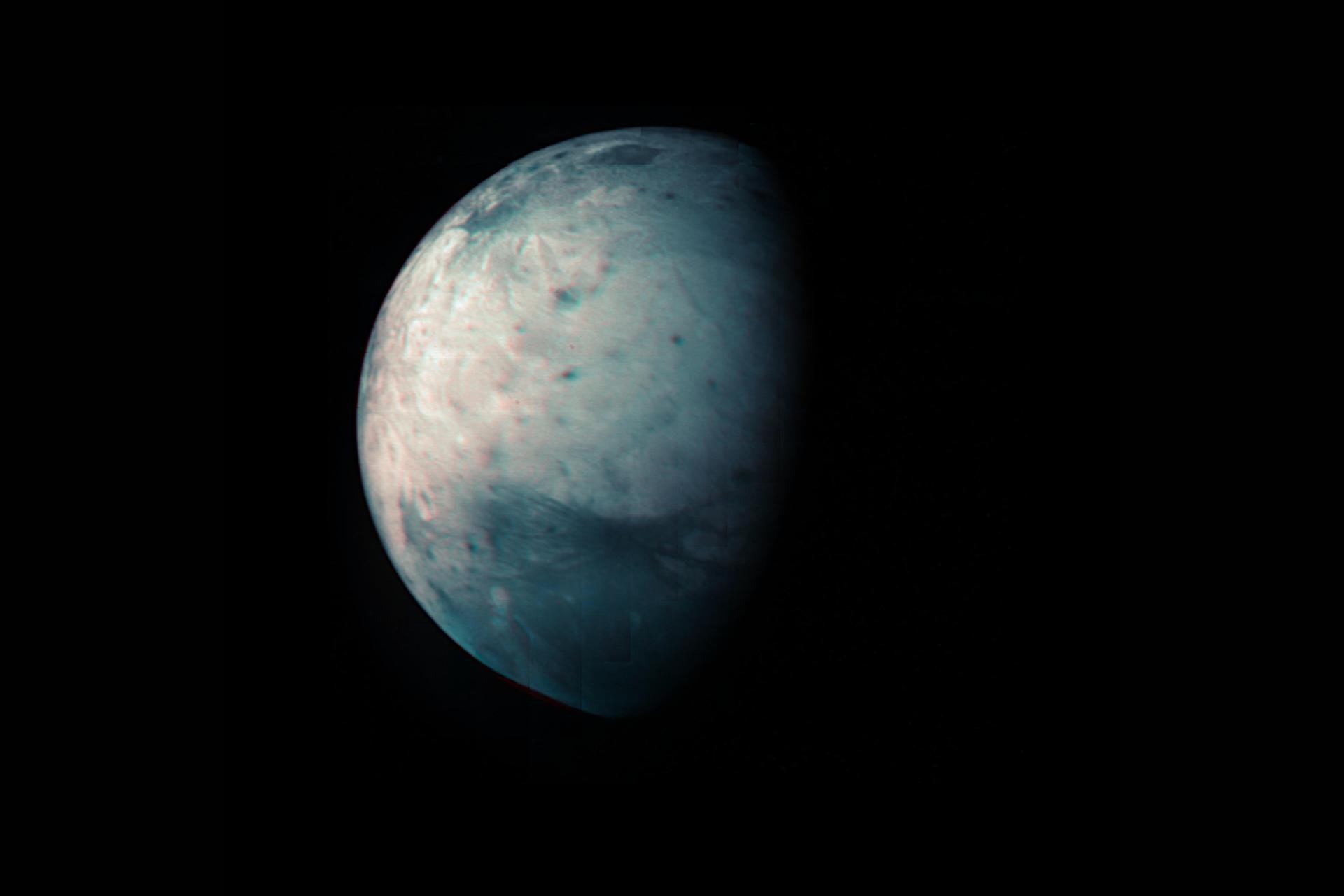A physicist from the University of Maryland has proposed an innovative approach to dark matter research by suggesting that Ganymede, Jupiter’s largest moon, could serve as a colossal detector for dark matter. This ambitious plan aims to harness Ganymede’s natural features to uncover evidence of the elusive substance that is thought to make up approximately 85% of the universe.
Dark matter remains one of the most significant mysteries in modern astrophysics. Although there is considerable indirect evidence supporting its existence, it is termed “dark” because it does not interact with light and is challenging to detect. In a preprint submitted to arXiv, physicist William DeRocco outlines how Ganymede’s craters may contain traces of dark matter particles, which could potentially be observed by upcoming spacecraft missions, including NASA‘s Europa Clipper and the European Space Agency‘s (ESA) JUICE mission.
DeRocco’s hypothesis suggests that large dark matter particles may have collided with Ganymede, penetrating its thick icy surface and creating extensive craters. Unlike the smaller dark matter candidates typically sought by ground-based detectors, these hypothetical particles would be significantly larger, resulting in what DeRocco terms “dark matter craters.” These features would consist of distinctive minerals brought to the surface from Ganymede’s subsurface oceans.
The implications of this research could be profound. DeRocco explains that using ground-penetrating radar might reveal columns of melted ice extending deep into the moon’s crust. This could provide valuable insights into the composition of Ganymede and its interactions with dark matter.
Astrophysicist Bradley Kavanaugh from the University of Cantabria in Spain, who is not affiliated with the study, acknowledged the intriguing nature of DeRocco’s proposal. He indicated that while the concept has promise, the existence of such massive dark matter particles remains unproven.
As with all explorations in dark matter research, skepticism is warranted. DeRocco’s proposal, while bold, may sound unconventional. However, the search for solutions to complex scientific questions often necessitates exploring innovative and sometimes radical ideas.
At present, the scientific community awaits a response from NASA and ESA regarding the viability of pursuing DeRocco’s hypothesis. Should they choose to investigate further, Ganymede might reveal a surface marked with craters that offer clues to the fundamental nature of dark matter, potentially transforming our understanding of the universe.






































































